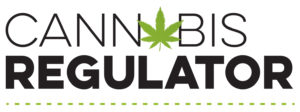Vermont last month became the ninth state to legalize recreational cannabis. While that’s momentum in itself, what’s even more important is the new path pot took to legalization in The Green Mountain State.
Vermont is the first state to legalize recreational cannabis through legislative vote. All other states had approved their measures by way of voters in referendum. In Vermont, both the state House of Representatives and Senate approved a bill that allows legal-aged adults to possess of small amounts of pot — up to one ounce, plus two mature and four immature plants per housing unit — effective July 1, 2018.
Gov. Phil Scott, a Republican, signed the bill into law on Jan. 22. Reportedly the governor followed this landmark moment by charging state legislators to focus on “more significant issues faced by Vermonters in their daily lives.”
While Scott’s reply may have sounded dismissive, the timing of his signing could not be ignored for its significance. The moment came just weeks after U.S. Attorney General Jeff Sessions rescinded the Obama-era Cole Memo, which had essentially instructed federal prosecutors to remain hands-off with state-approved pot unless it posed considerable risk. Sessions in a new memo gave prosecutors the go-ahead to intervene if they believed recreational cannabis was a problem — despite what state laws might say.
The showdown here is clear: Sessions versus state rights.
Will more states follow Vermont’s lead and approve legal cannabis through legislative action? Despite risks posed by Sessions? After all, public approval of recreational pot is at an all-time high. And a number of states, like New Jersey and possibly Connecticut, will soon or already have changes in their governor’s office towards pro-pot administrations.
And despite Sessions the industry continues to boom. According to reports, the U.S. legal pot industry realized $9 billion in sales in 2017. That generated $1.4 billion in state taxes last year, following $1 billion in tax revenue from 2016. Forecasts have national sales reaching $11 billion in sales in 2018, and up to $21 billion by 2021.
Furthermore, the number of people employed in this industry surpassed 121,000 last year. At current trajectory, the growing number of U.S. workers in legal weed will reach 292,000 by 2021. All signs point upwards.
One important note about Vermont’s law: it does not specify how non-medicinal users can legally obtain cannabis. While state citizens can “gift” each another legal-amounts of pot, seeds and plants, there is no language regarding a regulated retail market.
Which does not spell doom for retail. Rather, as with other states like Massachusetts that pumped their brakes after approving pot, Gov. Scott wants more information before proceeding further down this legislative road. A Vermont marijuana commission, at the end of 2018, will present him with findings from their ongoing study on education, prevention and highway safety. Until then, Gov. Scott has pledged to veto any other bills about regulation that reach his desk.
Regardless, Vermont remains a watershed moment in terms of state power related to legalized pot. The Sessions memo was meant, in part, to dissuade or delay the legal cannabis market from growing. But the Vermont House of Representatives approved recreational cannabis just hours after the memo’s release, followed by the Senate within days, and the governor within weeks.
Other states will likely look to Vermont as a sign that the issue of legal pot remains their right to decide and regulate — rather than defer to the U.S. Attorney General.
Kyle Swartz is editor of Cannabis Regulator. Reach him at kswartz@epgmediallc.com. Reach his recent piece: The Initial Impact of the Sessions Memo.










